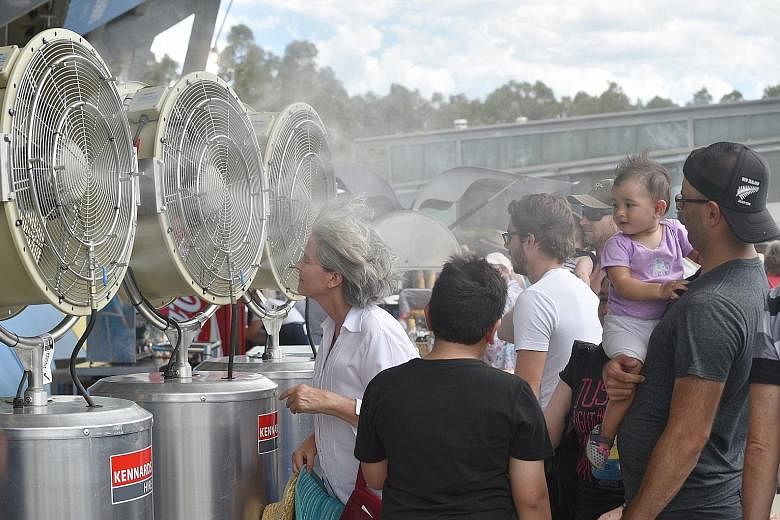The world's tropical zone is rapidly expanding due to increasing temperatures, in a development that experts say poses a growing challenge to Australia.
Scientists estimate global warming has led the zone between the Tropic of Cancer and Tropic of Capricorn to increase in size by about 85 km per decade for almost 40 years.
The expansion is heavily affecting Australia, where about 60 per cent of the land mass is within the tropics - an amount that is now increasing.
Experts say the growth of the tropical region will leave population centres, such as Sydney and Perth, facing hotter, drier sub-tropical conditions which could leave them with water shortages.
Meanwhile, the growing tropical zone will jeopardise plans to develop northern Australia, including boosting the local farming, mining and tourism sectors and creating large population hubs that are closer in distance to Asia.
Dr Andrew King, a climate scientist from the University of Melbourne, said the tropical expansion has "big implications" for Australia and federal and state governments will need to reconsider infrastructure needs for much of the country.
For instance, he said, the expansion of the tropical zone could leave Australia facing outbreaks of tropical diseases such as dengue fever, as well as growing hospital admissions of people suffering heat stress.
"It would seem sensible to incorporate these projections (on the tropics) into planning for infrastructure and development for different regions across Australia, including the impact on agriculture and water supply," he told The Sunday Times.
Referring to the country's third largest city, he said: "Brisbane would become almost tropical. Places like Sydney would also become... more humid and warmer."
The climate shift is pushing the nation's sub-tropical zone south, which is causing fertile parts of the country to become hotter and drier.
Analysts say the government needs to rethink its long-term urban and economic planning, with populations likely to further concentrate in the south and food growth no longer assured.
Professor Steve Turton, from Central Queensland University, said the expanding tropics had already led to declining winter rainfall in southern Australia, with droughts set to worsen, more hot days and greater risk of bushfires.
"If the current rate continues, by 2100, the edge of the new dry subtropical zone would extend from roughly Sydney to Perth," he wrote on The Conversation website on June 28. "Meanwhile, the fringes of the north of the continent may experience rainfall and temperature conditions that are more typical of our northern neighbours."
The shifting tropics has led to calls for Australia to rethink its plans for the northern part of the country, including the long-term goal of turning the area into the region's food bowl. The plans were laid out in 2015 in the federal government's White Paper for the Development of Northern Australia.
The biggest agricultural sectors in northern Australia are beef and sugar - it is the world's fifth-biggest exporter of each - as well as bananas, mangoes, tomatoes and cotton. The region has some 12 million cattle and over 3,000 sugar farms.
Dr King said large parts of Australia were already too dry for farming but conditions were only likely to worsen. Plans to turn northern Australia into a food bowl "would be under threat (as the tropics expand). The shift would mean more extreme heat in the north, which would affect a lot of crops there."
The expansion of the tropics varies globally but is believed to have ranged from 56km to 111km a decade since 1979. The Tropics of Cancer and Capricorn are about 23.5 degrees above and below the Equator respectively, but tropical climates have expanded to about 30 degrees on either side of the Equator.
The only place in Australia expected to be largely immune from the tropical spread is Tasmania, the southern island state which has the nation's coolest climate.


